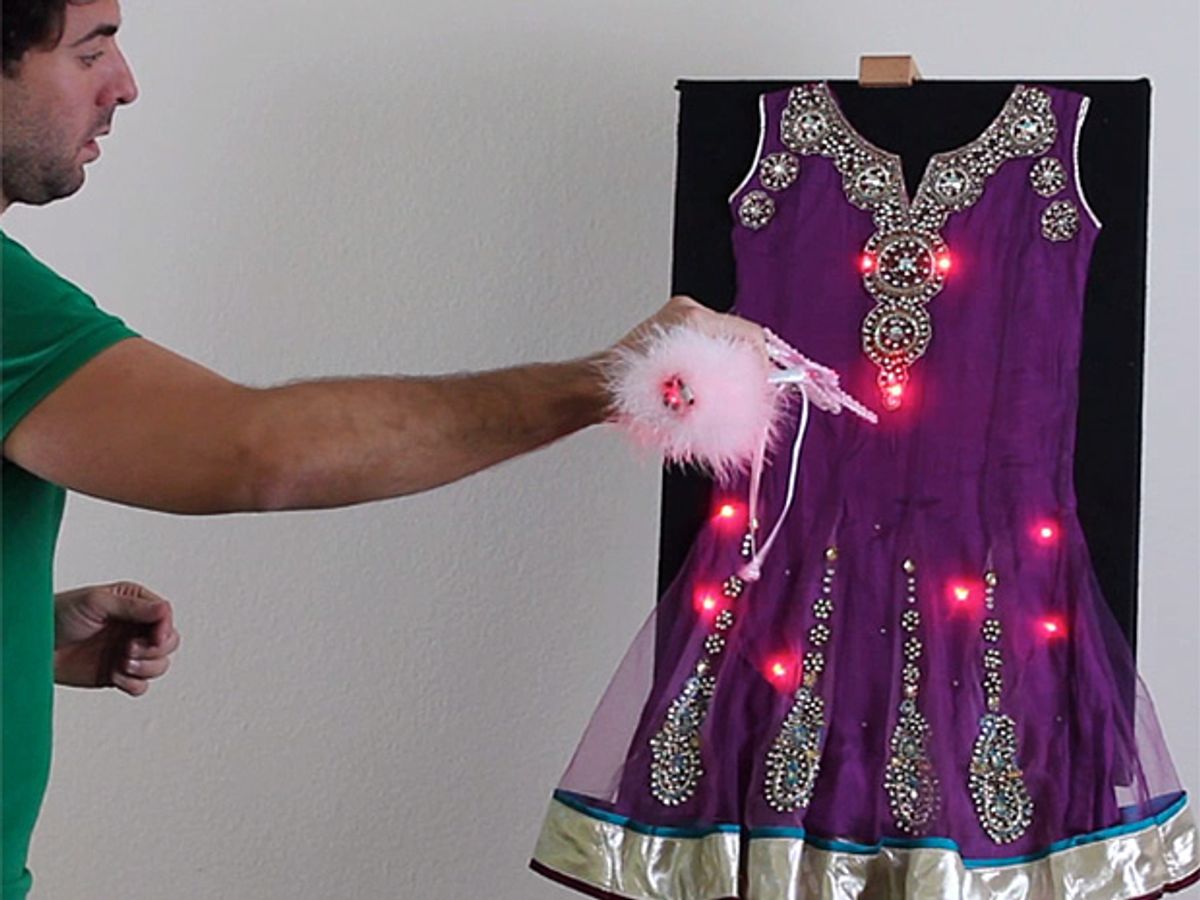Visible light communication (VLC) is a method of transmitting data using LEDs. It's a simple idea: since it's possible to turn an LED on and off much faster than the human eye can resolve, you can use lights to transmit binary data in the form of light pulses without any detectable flickering that would drive a human nuts. This data transmission is ambient, detectable by other LEDs (acting as photodiodes), and it seems like a promising way to Internet-of-Thingsify household objects without having to rely on Wi-Fi.
Using modulated ambient light to transmit data isn't a new idea; this "Li-Fi" is already being used commercially, with GE and Philips (among others) deploying data transmitting LEDs in places like stores and warehouses. However, it's difficult to encourage wider adoption of the technology because Li-Fi is generally used in specific (and isolated) situations where it operates alongside existing communications technologies rather than being integrated with them. In other words, you can have Wi-Fi, and you can have Li-Fi, but they don't work together all that well.
For easy and convenient Internet-of-Things-scale adoption, Li-Fi needs to be able to run on the same Internet Protocol (IP) that all of our other Web-connected stuff runs on. Taking the lead on this is Disney Research, which has a visible light communication system that uses a friendly Linux-based networking backbone to, among other things, let you use a magic wand to light up a princess dress. Sign me up.
The Disney researchers explain their work in a video showing off some of the ideas they have for possible applications.
Visible Light Communication is appealing for Internet-of-Things applications because we already have nearly all of the infrastructure in place to get it to work. LED lighting is prevalent, intelligent LED lighting is becoming more prevalent, and it's all affordable and easy to install for consumers. Existing Li-Fi systems don't usually leverage this, because you need special hardware to get gigabit (or even megabit) bandwidth. But for IoT devices with relatively simple communications needs, the single-kilobit-per-second speed that you can get with off-the-shelf consumer hardware is more than sufficient.

Disney Research started with an off the shelf LED bulb, and then modified it a little bit to include a System-on-a-Chip (SoC) running Linux, a controller module, and an additional power supply for the added electronics. The team also added dedicated light sensors to allow the bulb to act as both a transmitter and receiver. On the software side, the controller behaves just like a regular Ethernet interface, meaning that most applications using TCP or UDP sockets can use visible light communication right out of the box. The prototype bulb has Wi-Fi on the chip as well, but it's only used for testing: the light communicates with other lights through VLC only.
The key here is making everything as transparent as possible, so that talking to things over VLC is as easy to do as talking to things over Ethernet or Wi-Fi. Disney used previously developed Medium Access Control (MAC) and Physical (PHY) networking layers, with the VLC hardware controller on top, communicating over a serial interface. With all of this in place, Disney experimented with how best to implement IP multi-hop networking, with the goal of allowing communication between light bulbs and IoT-type objects without needing any radio-based technology at all.
Disney's results (you can read the paper here) suggest that the prototype VLC infrastructure they've developed is definitely flexible enough and robust enough to interoperate with the network protocol that we're already using everywhere else. Disney, being Disney, tends to focus on things like toys (they mention the forthcoming "Internet of Toys"), but the Magic Kingdom also talks about things like VLC-based localization services using existing lighting infrastructure that could be a viable alternative to localization based on radio signals. With the minimal hardware required to get all of this stuff to work, it seems plausible that a proactive push to get this technology into consumer LED lighting could be a realistic way to bring about an inexpensive and ubiquitous Internet of Things, sparkly princess dresses included.
Evan Ackerman is a senior editor at IEEE Spectrum. Since 2007, he has written over 6,000 articles on robotics and technology. He has a degree in Martian geology and is excellent at playing bagpipes.



